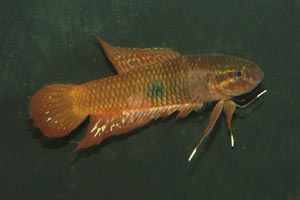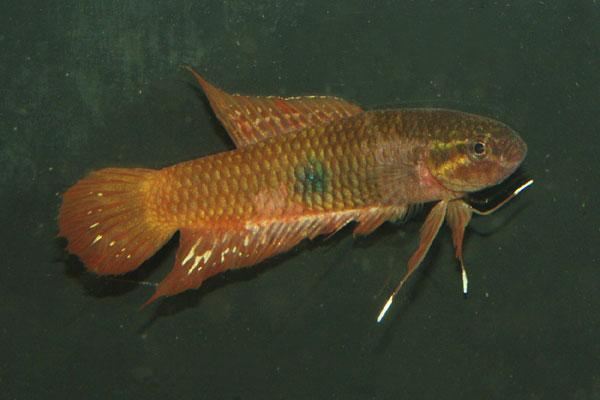

Species Profile | Images | Breeding Report | Similar Species

(Other members of the genus Betta)
ADULT SIZE: 6 cm
WATER CONDITIONS: Very soft and acidic
TEMPERATURE RANGE: 22-27 C
FOOD: Feed Betta brownorum predominantly live foods
DISTRIBUTION: This species comes from Indonesia, Malaysia
AQUARIUM CARE: This small Betta was collected by Allen and Barbera Brown, and is now fairly widely kept amongst anabantid fans. It is a shy species requiring its own tank, with soft water. They have been seen in a dealers tank (London tapwater medium hard, pH 7.8) doing fine. It is not overly aggressive.
BREEDING: Breeding requires very soft (pH4-5) water, which is most easily achieved with hydrochloric acid. A shallow tank is best with some form of breeding cave. A film canister stuck to the side works fine. The nest is built within it. Once spawning is completed the entire nest can be scooped out and raised seperately if desired.
Have you bred Betta brownorum? Why not fill in a breeding questionaire?, or examine existing Betta brownorum breeding reports

Females like this one have a smaller spot on their sides
BREEDING: Breeding requires very soft (pH4-5) water, which is most easily achieved with hydrochloric acid. A shallow tank is best with some form of breeding cave. A film canister stuck to the side works fine. The nest is built within it. Once spawning is completed the entire nest can be scooped out and raised seperately if desired.
Have you bred Betta brownorum? Why not fill in a breeding questionaire?
Sorry no records.